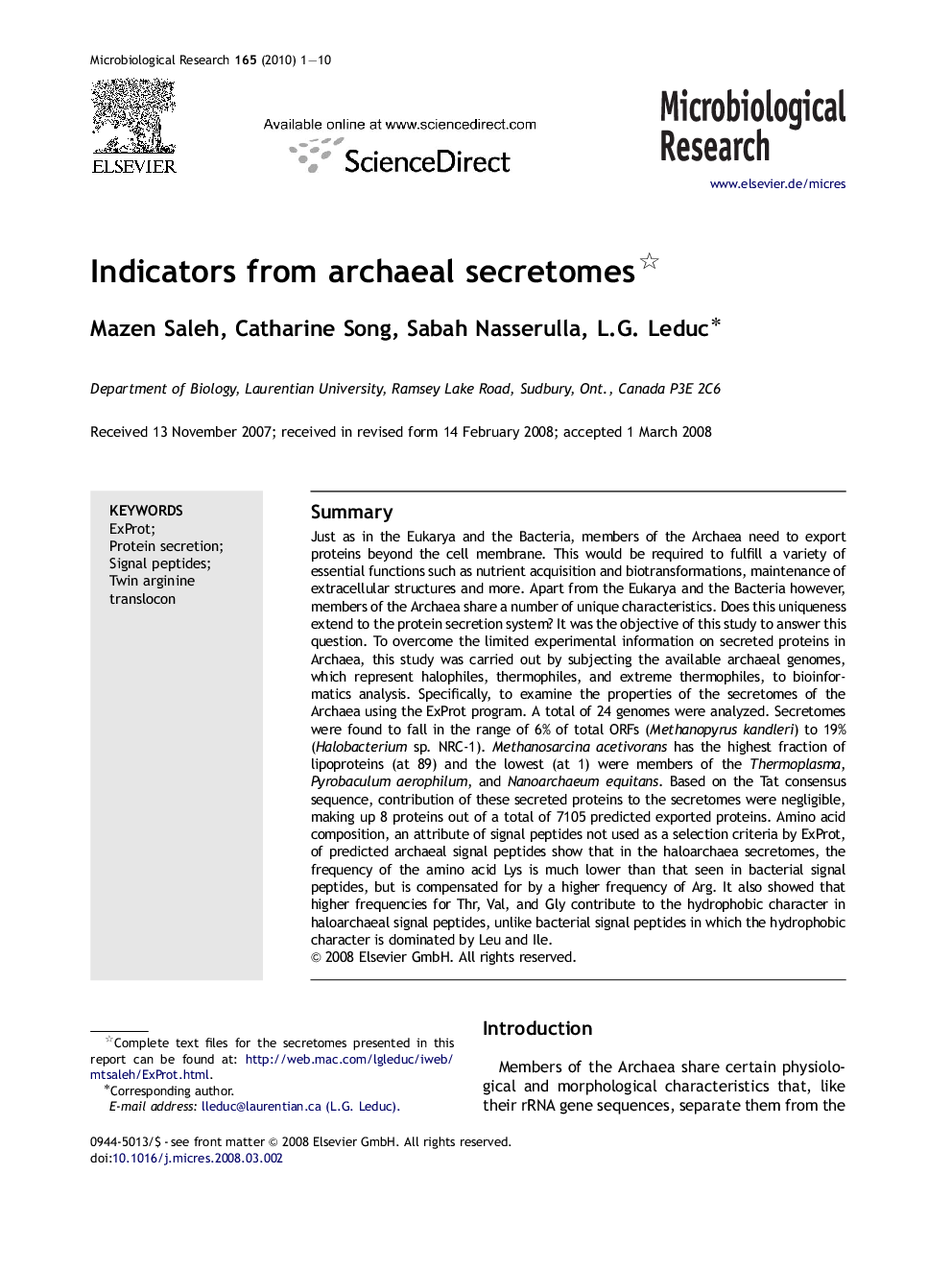| کد مقاله | کد نشریه | سال انتشار | مقاله انگلیسی | نسخه تمام متن |
|---|---|---|---|---|
| 2092728 | 1081812 | 2010 | 10 صفحه PDF | دانلود رایگان |

SummaryJust as in the Eukarya and the Bacteria, members of the Archaea need to export proteins beyond the cell membrane. This would be required to fulfill a variety of essential functions such as nutrient acquisition and biotransformations, maintenance of extracellular structures and more. Apart from the Eukarya and the Bacteria however, members of the Archaea share a number of unique characteristics. Does this uniqueness extend to the protein secretion system? It was the objective of this study to answer this question. To overcome the limited experimental information on secreted proteins in Archaea, this study was carried out by subjecting the available archaeal genomes, which represent halophiles, thermophiles, and extreme thermophiles, to bioinformatics analysis. Specifically, to examine the properties of the secretomes of the Archaea using the ExProt program. A total of 24 genomes were analyzed. Secretomes were found to fall in the range of 6% of total ORFs (Methanopyrus kandleri) to 19% (Halobacterium sp. NRC-1). Methanosarcina acetivorans has the highest fraction of lipoproteins (at 89) and the lowest (at 1) were members of the Thermoplasma, Pyrobaculum aerophilum, and Nanoarchaeum equitans. Based on the Tat consensus sequence, contribution of these secreted proteins to the secretomes were negligible, making up 8 proteins out of a total of 7105 predicted exported proteins. Amino acid composition, an attribute of signal peptides not used as a selection criteria by ExProt, of predicted archaeal signal peptides show that in the haloarchaea secretomes, the frequency of the amino acid Lys is much lower than that seen in bacterial signal peptides, but is compensated for by a higher frequency of Arg. It also showed that higher frequencies for Thr, Val, and Gly contribute to the hydrophobic character in haloarchaeal signal peptides, unlike bacterial signal peptides in which the hydrophobic character is dominated by Leu and Ile.
Journal: Microbiological Research - Volume 165, Issue 1, 29 January 2010, Pages 1–10